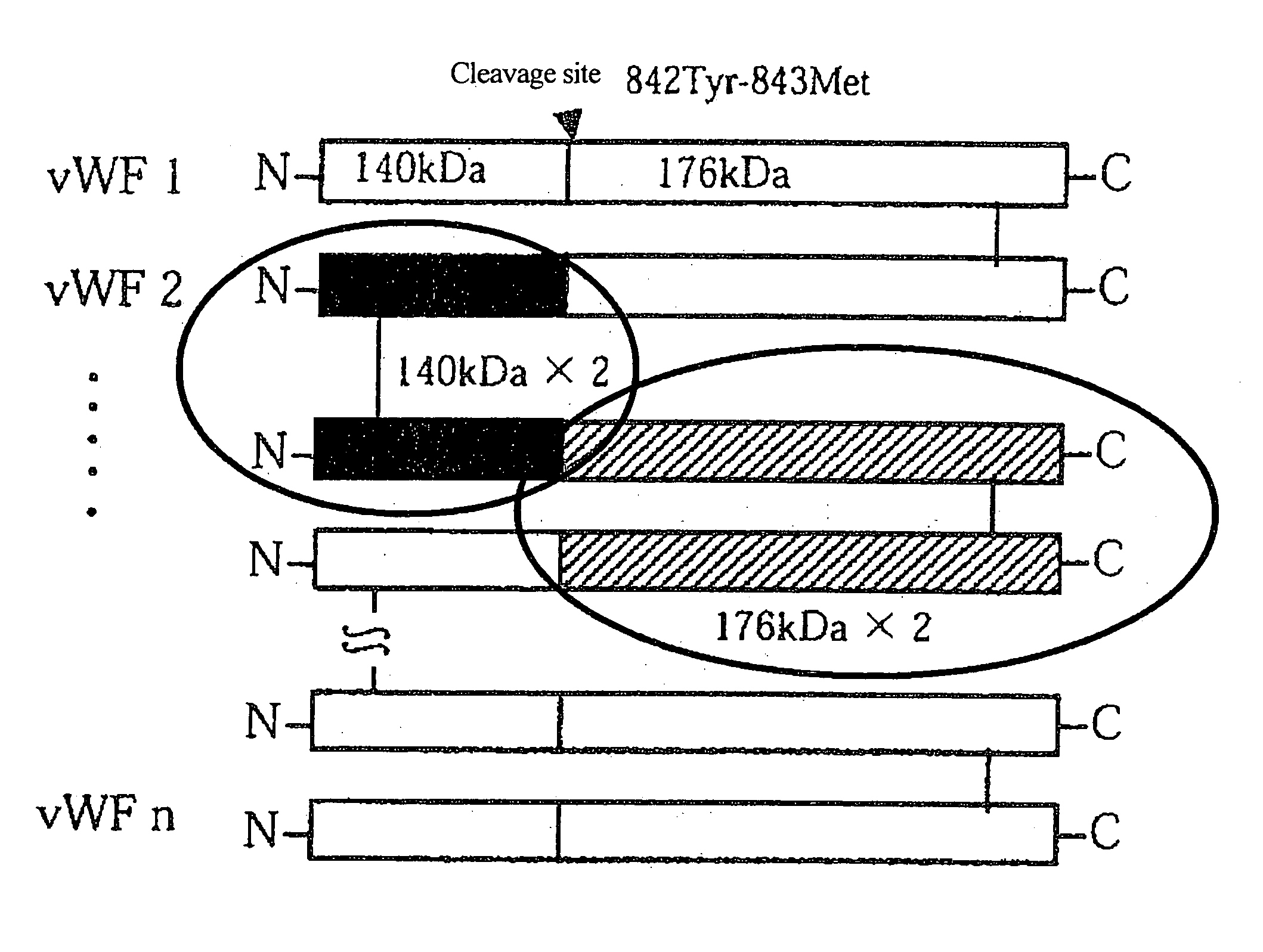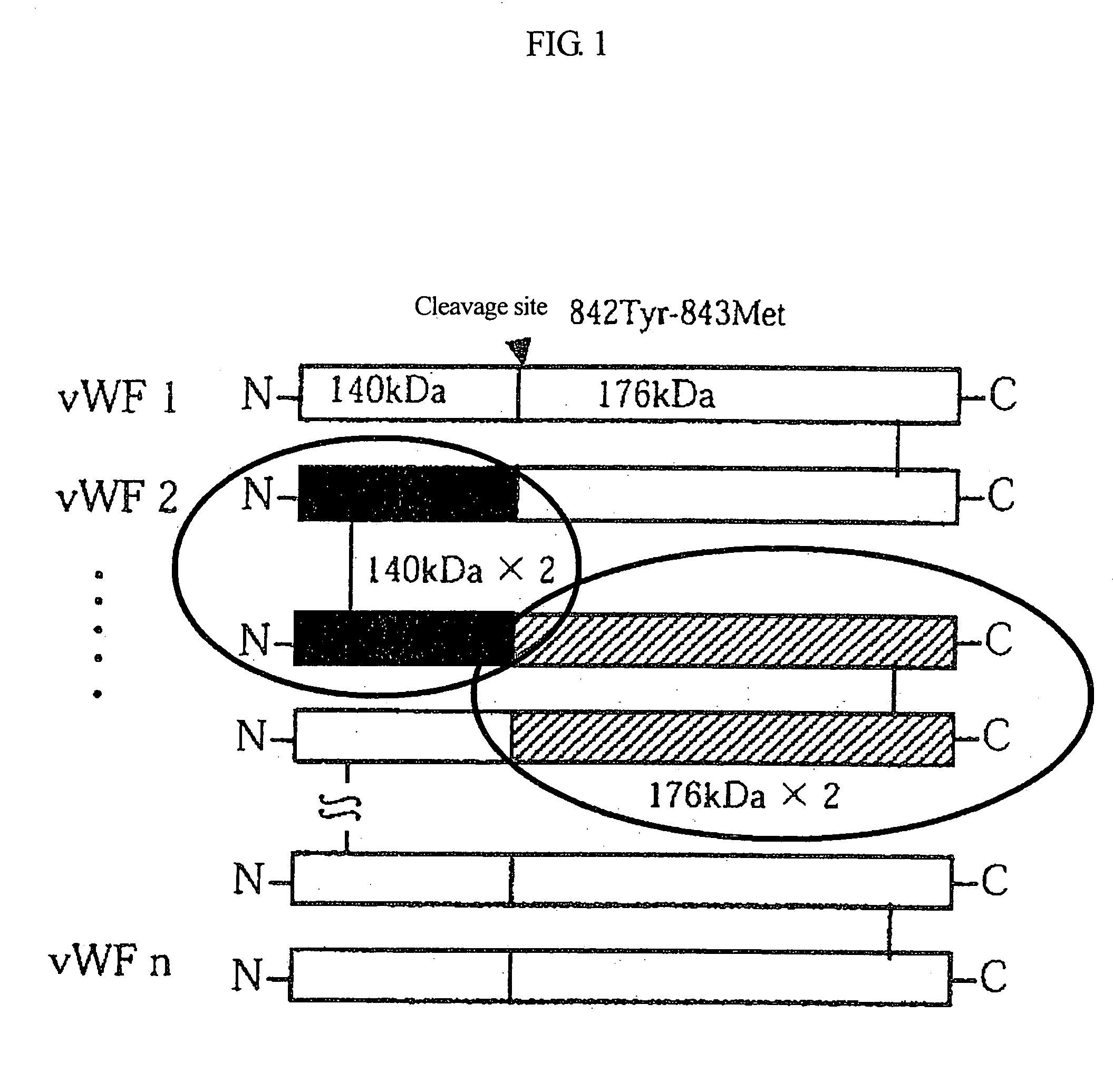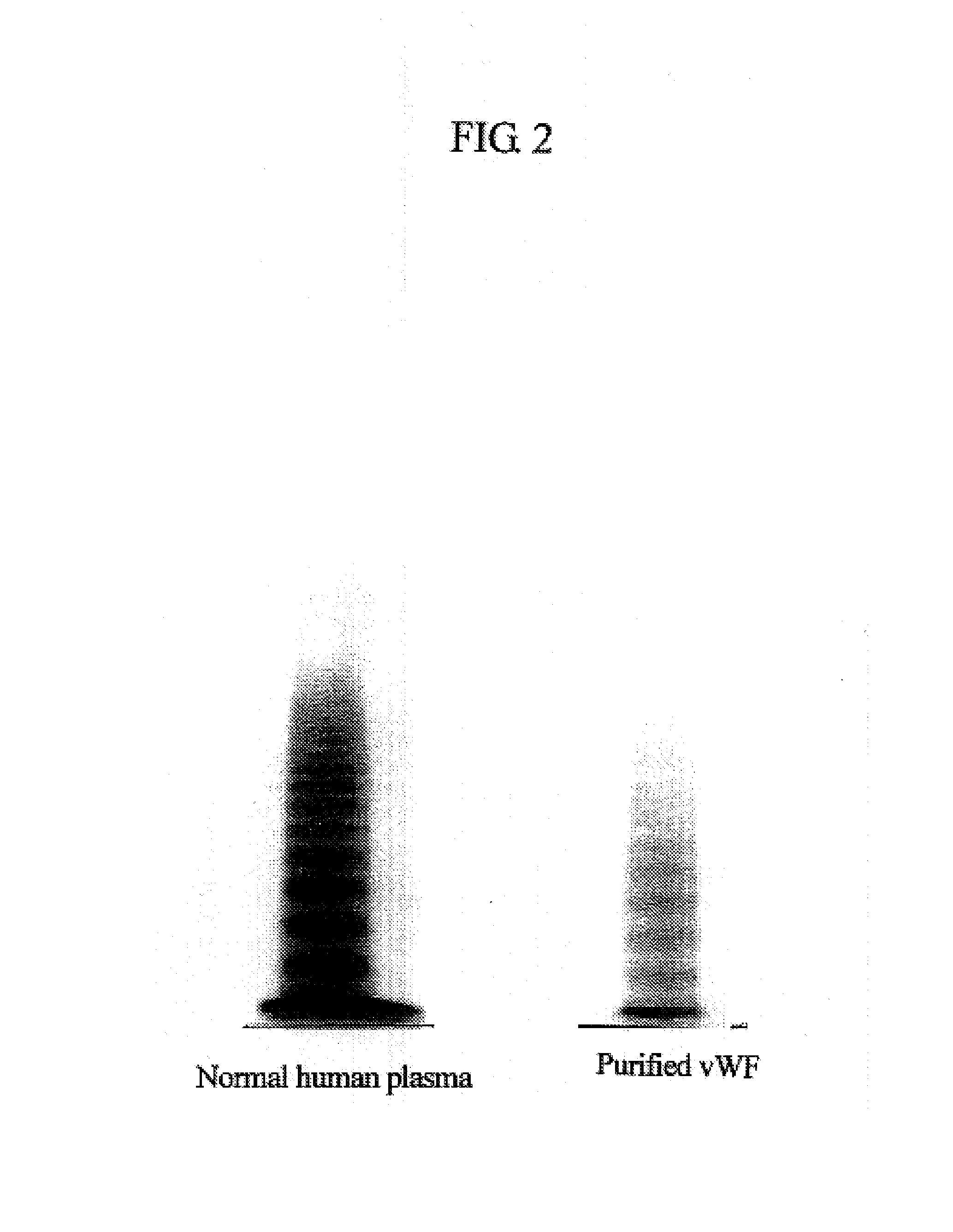Von Willebrand Factor (Vwf)-cleaving protease
a protease and van willebrand technology, applied in the field ofplasma proteins, can solve the problems of inability to analyze the properties of this protease, the protein of interest is supposed to be gigantic, and it is difficult to isolate and identify the protease from a plasma fraction, so as to enhance the transcription activity of the promoter and enhance the transcription effect of the dna encoding the polypeptide of the present invention
- Summary
- Abstract
- Description
- Claims
- Application Information
AI Technical Summary
Benefits of technology
Problems solved by technology
Method used
Image
Examples
example 1
(Preparation of vWF)
[0143]A plasma cryoprecipitation (2 g) was dissolved in 20 ml of buffer (0.01% Tween-80 / 50 mM Tris-HCl / 100 mM NaCl, pH 7.4), and the resultant was subjected to gel filtration using a Sephacryl S-500 HR Column (2.6×90 cm, Amersham Pharmacia) to prepare vWF. Fractions were recovered at a flow rate of 2 ml / min in amounts of 6 ml each. vWF was analyzed by Western blotting using a peroxidase-labeled rabbit anti-human vWF antibody (DAKO), and high-molecular-weight vWF fractions were pooled. The pooled fractions were subjected to multimer analysis using agarose electrophoresis as described below.
[0144]As shown in FIG. 1, vWF originally has a multimer structure in which vWF monomer molecules are polymerized with each other at their N-terminuses or at their C-terminuses, and vWF is subjected to partial hydrolysis by the vWF-specific cleaving protease. As a result of the analysis, as shown in FIG. 2, the purified vWF exhibited a multimer pattern based on agarose electropho...
example 2
(vWF-cleaving Reaction)
[0145]vWF-cleaving activity was assayed as follows. A sample comprising 10 mM barium chloride (final concentration) was pre-incubated at 37° C. for 5 minutes to activate protease. A buffer (15 to 20 ml, 1.5 M urea / 5 mM Tris-HCl, pH 8.0) was placed in a 50 ml Falcon Tube. Subsequently, a membrane filter (0.025 μm, Millipore) was floated therein, and 100 μl of activated sample prepared by mixing with 50 μl of vWF substrate solution was added. The resultant was allowed to stand in an incubator (37° C.) overnight and recovered from the filter on the next day. The recovered sample was evaluated based on the vWF cleavage pattern as described below in the “SDS-PAGE” section.
SDS-PAGE
[0146]SDS-5% polyacrylamide gel was autologously prepared and used. An SDS electrophoresis buffer (2 μl, in the presence or absence of a reducing agent, i.e., 2-mercaptoethanol) was added to 10 μl of the sample described in the “vWF-cleaving activity assay” section, and the resultant was b...
example 3
(Preparation of vWF-cleaving Protease)
[0149]Plasma was subjected to ethanol fractionation developed by Cohn. A protease having high vWF-cleaving activity (one with high specific activity) when protein levels in four fractions (i.e., starting plasma, cryoprecipitate, fraction I (FI) supernatant, and a paste) are made equivalent to each other was selected. As shown in FIG. 3, the protease activity was highest in the FI paste. The N-terminal sequence of this cleavage fragment was analyzed, and as a result, activity derived from the cryoprecipitate and the FI paste were found to cleave the peptide bond between residues Tyr 842 and Met 843. Thus, the FI paste was determined to be a main starting material for purification thereafter.
Solubilization of FI Paste
[0150]The FI paste was fractionated in fractions of 12 g each and then cryopreserved. The paste was allowed to melt at 4° C. the day before its use. The next day, 120 ml of solubilizing buffer (0.05% azide, 50 mM Tris-HCl (pH 7.4), 10...
PUM
| Property | Measurement | Unit |
|---|---|---|
| molecular weight | aaaaa | aaaaa |
| molecular weight | aaaaa | aaaaa |
| molecular weight | aaaaa | aaaaa |
Abstract
Description
Claims
Application Information
 Login to View More
Login to View More - R&D
- Intellectual Property
- Life Sciences
- Materials
- Tech Scout
- Unparalleled Data Quality
- Higher Quality Content
- 60% Fewer Hallucinations
Browse by: Latest US Patents, China's latest patents, Technical Efficacy Thesaurus, Application Domain, Technology Topic, Popular Technical Reports.
© 2025 PatSnap. All rights reserved.Legal|Privacy policy|Modern Slavery Act Transparency Statement|Sitemap|About US| Contact US: help@patsnap.com



